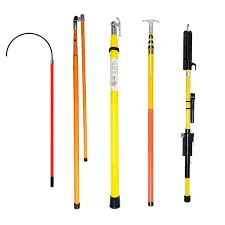
-
 Afrikaans
Afrikaans -
 Albanian
Albanian -
 Amharic
Amharic -
 Arabic
Arabic -
 Armenian
Armenian -
 Azerbaijani
Azerbaijani -
 Basque
Basque -
 Belarusian
Belarusian -
 Bengali
Bengali -
 Bosnian
Bosnian -
 Bulgarian
Bulgarian -
 Catalan
Catalan -
 Cebuano
Cebuano -
 Corsican
Corsican -
 Croatian
Croatian -
 Czech
Czech -
 Danish
Danish -
 Dutch
Dutch -
 English
English -
 Esperanto
Esperanto -
 Estonian
Estonian -
 Finnish
Finnish -
 French
French -
 Frisian
Frisian -
 Galician
Galician -
 Georgian
Georgian -
 German
German -
 Greek
Greek -
 Gujarati
Gujarati -
 Haitian Creole
Haitian Creole -
 hausa
hausa -
 hawaiian
hawaiian -
 Hebrew
Hebrew -
 Hindi
Hindi -
 Miao
Miao -
 Hungarian
Hungarian -
 Icelandic
Icelandic -
 igbo
igbo -
 Indonesian
Indonesian -
 irish
irish -
 Italian
Italian -
 Japanese
Japanese -
 Javanese
Javanese -
 Kannada
Kannada -
 kazakh
kazakh -
 Khmer
Khmer -
 Rwandese
Rwandese -
 Korean
Korean -
 Kurdish
Kurdish -
 Kyrgyz
Kyrgyz -
 Lao
Lao -
 Latin
Latin -
 Latvian
Latvian -
 Lithuanian
Lithuanian -
 Luxembourgish
Luxembourgish -
 Macedonian
Macedonian -
 Malgashi
Malgashi -
 Malay
Malay -
 Malayalam
Malayalam -
 Maltese
Maltese -
 Maori
Maori -
 Marathi
Marathi -
 Mongolian
Mongolian -
 Myanmar
Myanmar -
 Nepali
Nepali -
 Norwegian
Norwegian -
 Norwegian
Norwegian -
 Occitan
Occitan -
 Pashto
Pashto -
 Persian
Persian -
 Polish
Polish -
 Portuguese
Portuguese -
 Punjabi
Punjabi -
 Romanian
Romanian -
 Russian
Russian -
 Samoan
Samoan -
 Scottish Gaelic
Scottish Gaelic -
 Serbian
Serbian -
 Sesotho
Sesotho -
 Shona
Shona -
 Sindhi
Sindhi -
 Sinhala
Sinhala -
 Slovak
Slovak -
 Slovenian
Slovenian -
 Somali
Somali -
 Spanish
Spanish -
 Sundanese
Sundanese -
 Swahili
Swahili -
 Swedish
Swedish -
 Tagalog
Tagalog -
 Tajik
Tajik -
 Tamil
Tamil -
 Tatar
Tatar -
 Telugu
Telugu -
 Thai
Thai -
 Turkish
Turkish -
 Turkmen
Turkmen -
 Ukrainian
Ukrainian -
 Urdu
Urdu -
 Uighur
Uighur -
 Uzbek
Uzbek -
 Vietnamese
Vietnamese -
 Welsh
Welsh -
 Bantu
Bantu -
 Yiddish
Yiddish -
 Yoruba
Yoruba -
 Zulu
Zulu


Des . 19, 2024 15:55 Back to list
wire draw fish tape
Understanding Wire Draw and Fish Tape A Comprehensive Guide
When it comes to electrical installations or home improvement projects, professionals and DIY enthusiasts alike often encounter challenges related to wiring. One of the effective tools that come to the rescue is wire draw fish tape. This article provides a detailed exploration of what wire draw fish tape is, its uses, and why it's an indispensable tool in electrical work.
What is Fish Tape?
Fish tape, sometimes referred to as wire pull tape, is a tool used primarily for pulling electrical wires through conduits. It is typically made of flexible materials, such as nylon or steel, allowing it to navigate through tight spaces and various bends in conduits smoothly. The fish tape comes in various lengths and thicknesses, making it suitable for different types of wiring jobs.
The Importance of Wire Draw in Electrical Work
The term wire draw refers to the process of pulling electrical wires through conduits without damaging either the wires or the conduit itself. This endeavor can be particularly challenging when working in spaces that are small or have complicated layouts. Fish tape plays a crucial role in wire draw, providing a straightforward and efficient way to insert and maneuver wires.
How to Use Fish Tape for Wire Draw
Using fish tape can seem daunting at first, but with some practice, it becomes an essential skill. Here’s a step-by-step guide on how to use fish tape effectively
1. Preparation Before starting, gather all the necessary tools, including wire, fish tape, and possibly a wire cutter. Ensure your work area is safe and all power sources are turned off.
2. Feeding the Fish Tape Insert the end of the fish tape into the conduit. If the conduit has bends or turns, you may need to wiggle it slightly to navigate through those curves.
wire draw fish tape

3. Attaching the Wire Once the fish tape has reached the other end of the conduit, it’s time to attach the electrical wire. Securely wrap the wire around the hook of the fish tape or use electrical tape for a firm hold.
4. Pulling the Wire Gradually pull back the fish tape, which will lead the attached wire through the conduit. Ensure you maintain tension on the wire so that it does not snag or get caught.
5. Final Adjustments Once the wire is pulled through, detach it from the fish tape, and make any necessary adjustments for installation.
Benefits of Using Wire Draw Fish Tape
1. Efficiency Fish tape significantly speeds up the process of running wires. Instead of struggling to maneuver wires through tight spaces manually, fish tape allows for a simple pull-through method.
2. Reduced Damage Risk Using fish tape minimizes the risk of damaging wires or conduits, ensuring a secure and effective installation.
3. Versatility Fish tape is suitable for a variety of wire types and conduit sizes, making it a versatile tool in both residential and commercial electrical work.
4. Cost-Effectiveness Investing in a good quality fish tape can save time and reduce labor costs, making it a sound investment for anyone involved in electrical installations.
In conclusion, wire draw fish tape is an invaluable tool for anyone dealing with electrical wiring. Its ability to simplify the wire-pulling process, combined with its efficiency and versatility, makes it an essential part of an electrician's toolkit. Whether you are a professional or a DIY enthusiast, understanding how to use fish tape can greatly enhance your wiring projects, leading to safer and more effective installations.
Latest news
The Unique Design of Cable Socks
NewsJun.04,2025
Swivel Connectors in Industrial Automation
NewsJun.04,2025
Safety Features of Link Sticks
NewsJun.04,2025
How to choose the best cable pulling winch for sale
NewsJun.04,2025
Fish tape safety precautions
NewsJun.04,2025
Essential Maintenance Tips for Cable Pulling Tools
NewsJun.04,2025











